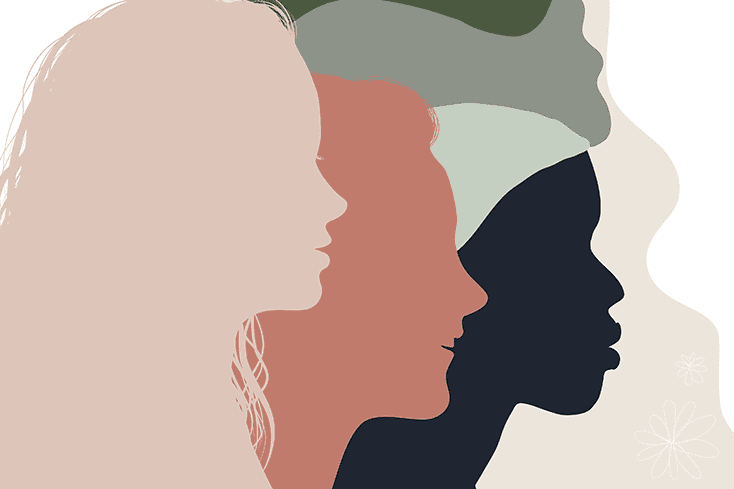March 04, 2022
By Stephanie Jensen, MSW, LICSW

As an Indigenous psychotherapist who grew up in predominantly white spaces, I’ve come to learn the importance of connection and belonging as a part of healing. Being an active part of a community that allows us to feel seen is truly an invaluable feeling. When we feel seen and connected as humans, our healing expands.
Our physical health and longevity are also greatly impacted by social connectedness; research has shown that social isolation may significantly increase a person’s chances of early death while strong social connection can lead to a 50% increased chance of longevity. I can only imagine this being even more impactful for Indigenous folks as carriers of ancestral trauma, generational trauma and historical trauma due to being separated from our community and the land.
As I have undergone my own journey to find connection to my Indigenous community, I hope to share what I’ve learned.
Throughout my life, I have been a part of many non-Indigenous communities where I experienced a sense of belonging — but I always felt as though something was missing. For example, I grew up in a small town in Wisconsin where I experienced what it was like to be a part of a small, tight-knit community. While I experienced connection and support in that community, it was different from the type of connection and support I felt when I was in community with other Indigenous Peoples. I’ve learned this is a common experience among multiracial folks; no matter what community you are a part of, you might feel as though you don’t fully “belong” in one space.
It wasn’t until I was able to deepen connections with my Indigenous community, and the land, that I realized there was a part of me needing to feel seen as an Indigenous person. Lack of community for an Indigenous person is often felt so deeply because, culturally, a tribe as a whole represents “family.” In Indigenous communities, we see each other as relatives, no matter what our blood relation is. I have many aunties, uncles, cousins, siblings, grandmothers and grandfathers. As I strengthened these connections and felt seen as an Indigenous person while still learning about my own culture, I experienced a whole new sense of belonging in community.
Community is a pillar of identity for Indigenous Peoples — it is coming together for ceremony, for mourning, for celebration, for gratitude, for harvest, for support, for everything.
As I’ve continued to grow those connections to Indigenous folks around me, I’ve begun to feel an irreplaceable sense of belonging. Having this community of family and tradition has brought a whole different level of healing to my spirits.
However, that is not to say my journey toward belonging has been easy. I still struggle with belonging even within my Indigenous community. One of the common Indigenous experiences contributing to the lack of belonging is not feeling “Indigenous enough,” something I’ve come across personally. This sense of inadequacy can manifest in many forms, from not feeling welcome to attend Indigenous ceremonies to worrying about rejection from other Indigenous Peoples. Often this is a painful, lonely experience, which can be difficult to name out loud, let alone to try to heal through.
Despite the challenges, without these connections, I don’t think I would be the human I am today — nor would I have the capacity to continue my work as a therapist over the last two years. In fact, I don’t think I would have even had the confidence to write a blog post like this: A piece centering the Indigenous experience. And I am grateful that the opportunities to connect with the Indigenous community have expanded over time.
Enter at your own pace — when you’re ready. There is no wrong way to start; the sooner you can begin seeing more Indigenous Peoples in your interactions, the sooner you will find what helps you feel connected. You can begin to search out your Indigenous community in several ways:
You may experience a variety of intense emotions when engaging in community, especially if you take part in traditional songs, prayers and medicines. As you engage, notice what you feel most connected to, whether that be in person, virtual or a combination of both.
Once you have established some connections, you can take the next few steps in deepening your relationship with the community by inquiring about how and where you can continue learning. Some things you could inquire about include:
While feeling doubt or uncertainty about belonging is understandable, don’t let it hold you back. You can connect with Indigenous folks within your local community no matter what tribe you may be from. Making the first steps can be the hardest part. I often found a lot of relief in naming my struggles and nervousness to the Indigenous folks around me who offered support.
Your community can have layers. For example, your family and friends are a part of your community whether they are all Indigenous or not. There is no right or wrong time to connect with people. In fact, it is best to move at your own pace as you build community as it will be the foundation to ground you throughout your healing journey.
Stephanie Jensen is a Licensed Independent Clinical Social Worker, psychotherapist, private practice owner and social work licensing supervisor. She specializes in trauma and provides support for BIPOC folks in her community to access therapy.
We’re always accepting submissions to the NAMI Blog! We feature the latest research, stories of recovery, ways to end stigma and strategies for living well with mental illness. Most importantly: We feature your voices.
LEARN MORENAMI HelpLine is available M-F, 10 a.m. – 10 p.m. ET. Call 800-950-6264,
text “NAMI” to 62640, or email. In a crisis, call or text 988 (24/7).